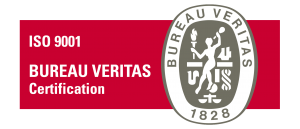Il Bonus Facciate
The "facade bonus"
- 06 Feb 2020

Con la Legge di Bilancio 2020 (L. 160/2019) è stata introdotta, quale unica novità positiva, una nuova agevolazione per i fabbricati, nota come “bonus facciate“.
Nello specifico, l’agevolazione consiste in una detrazione d’imposta, da ripartire in 10 quote annuali costanti, pari al 90% delle spese sostenute nel 2020 per interventi, compresi quelli di sola pulitura o tinteggiatura esterna, finalizzati al recupero o restauro della facciata esterna degli edifici esistenti ubicati in determinate zone. Sono ammessi al beneficio esclusivamente gli interventi sulle strutture opache della facciata, su balconi o su ornamenti e fregi.
In particolare, le zone in questione sono quelle denominate A e B individuate dall’art. 2 del Decreto n. 1444/1968 del Ministro dei lavori pubblici, ovvero:
- La zona A include le parti del territorio interessate da agglomerati urbani che rivestono carattere storico, artistico o di particolare pregio ambientale o da porzioni di essi, comprese le aree circostanti che possono considerarsi parte integrante, per tali caratteristiche, degli agglomerati stessi.
- La zona B include le altre parti del territorio edificate, anche solo in parte, considerando tali le zone in cui la superficie coperta degli edifici esistenti non è inferiore al 12,5% della superficie fondiaria della zona e nelle quali la densità territoriale è superiore a 1,5 mc/mq.
Se i lavori di rifacimento della facciata, quando non sono di sola pulitura o tinteggiatura esterna, riguardano interventi che influiscono dal punto di vista termico o interessano oltre il 10% dell’intonaco della superficie disperdente lorda complessiva dell’edificio, è richiesto che siano soddisfatti i requisiti di cui al decreto Mise 26 giugno 2015 (“Linee guida nazionali per la certificazione energetica degli edifici”) e quelli, relativi ai valori di trasmittanza termica, indicati alla tabella 2 allegata al decreto Mise 11 marzo 2008. In queste ipotesi, l’ENEA effettuerà controlli sulla sussistenza dei necessari presupposti, secondo le procedure e modalità stabilite dal Decreto Interministeriale 11 maggio 2018.
Si applicano le disposizioni del Decreto Mef n. 41/1998, ossia il regolamento in materia di detrazioni per le spese di ristrutturazione edilizia.
Con la Circolare applicativa N. 2/E del 14 febbraio 2020, l’Agenzia delle Entrate ne ha definito in modo più preciso il campo di intervento sia per:
I soggetti beneficiari
Tutti i contribuenti residenti e non residenti nel territorio dello Stato, che sostengono le spese per l’esecuzione degli interventi agevolati, a prescindere dalla tipologia di reddito di cui essi siano titolari. Trattandosi di una detrazione dall’imposta lorda, la stessa non può essere utilizzata dai soggetti che possiedono esclusivamente redditi assoggettati a tassazione separata o ad imposta sostitutiva. Ai fini della detrazione, i soggetti beneficiari devono possedere o detenere l’immobile oggetto dell’intervento in base ad un titolo idoneo, al momento di avvio dei lavori o al momento del sostenimento delle spese, se antecedente il predetto avvio.
Gli interventi ammessi
Sotto il profilo oggettivo, la detrazione è ammessa a fronte del sostenimento delle spese relative ad interventi finalizzati al recupero o restauro della “facciata esterna”, realizzati su edifici esistenti, parti di edifici esistenti o su unità immobiliari esistenti di qualsiasi categoria catastale, compresi quelli strumentali. Sono escluse le “spese sostenute per la sostituzione di vetrate, infissi, grate, portoni e cancelli”.
Con la condizione che contribuenti interessati al “bonus facciate”, in assenza di una disposizione normativa, non possono optare per la cessione del credito corrispondente alla detrazione spettante né, in alternativa, all’utilizzo diretto della predetta detrazione, per un contributo di pari ammontare, sotto forma di sconto sul corrispettivo dovuto, anticipato dal fornitore che ha effettuato gli interventi”.
 Pasquale Marottoli – ZEDPROGETTI srl
Pasquale Marottoli – ZEDPROGETTI srl
With the Budget Law 2020 (Law 160/2019) a new facility for buildings, known as the “facade bonus”, was introduced as the only positive innovation.
Specifically, the benefit consists of a tax deduction, to be distributed in 10 constant annual instalments, equal to 90% of the expenses incurred in 2020 for interventions, including those of cleaning or external painting only, aimed at the recovery or restoration of the external facade of existing buildings located in certain areas. Only interventions on opaque facade structures, balconies or ornaments and friezes are eligible.
In particular, the areas in question are those named A and B identified by art. 2 of Decree no. 1444/1968 of the Minister of Public Works, that is:
Zone A includes the parts of the territory affected by urban agglomerations that are of historical, artistic or of particular environmental value or portions of them, including the surrounding areas that can be considered an integral part, due to these characteristics, of the agglomerations themselves.
Zone B includes the other parts of the built up territory, even if only partially, considering as such the areas where the covered area of existing buildings is not less than 12.5% of the land surface of the area and where the land density is higher than 1.5 mc/sqm.
If the facade renovation works, when they are not only cleaning or external painting, concern interventions that affect from the thermal point of view or affect more than 10% of the total gross dispersing surface of the building, it is required that the requirements of the Mise Decree 26 June 2015 (“National guidelines for the energy certification of buildings”) and those, relating to thermal transmittance values, indicated in Table 2 attached to the Mise Decree 11 March 2008, are met. In these cases, ENEA will carry out checks on the existence of the necessary conditions, in accordance with the procedures and methods established by the Interministerial Decree of 11 May 2018.
The provisions of Mef Decree no. 41/1998, i.e. the regulation on deductions for building renovation costs, shall apply.
With the Application Circular No. 2/E of 14 February 2020, the Inland Revenue has defined more precisely its scope of intervention both for:
The beneficiaries
All taxpayers resident and non-resident in the territory of the State, who bear the costs of carrying out the subsidised interventions, regardless of the type of income they have. Since this is a deduction from gross tax, it cannot be used by persons who own exclusively income subject to separate taxation or substitute tax. For the purposes of the deduction, the beneficiaries must own or hold the property subject to the intervention on the basis of a suitable title, at the time the work is started or at the time the expenses are incurred, if prior to the aforesaid start.
Admitted interventions
From an objective point of view, the deduction is allowed in respect of expenditure relating to work to recover or restore the “external facade”, carried out on existing buildings, parts of existing buildings or on existing building units of any cadastral category, including instrumental buildings. Expenditure incurred for the replacement of glazing, fixtures, gratings, gates and gates” is excluded.
With the condition that taxpayers interested in the “facade bonus”, in the absence of a regulatory provision, may not opt for the assignment of the credit corresponding to the deduction due nor, alternatively, the direct use of the above mentioned deduction, for a contribution of equal amount, in the form of a discount on the amount due, advanced by the supplier who carried out the works”.

